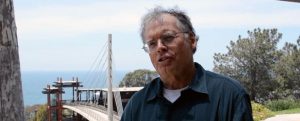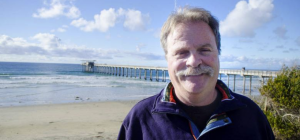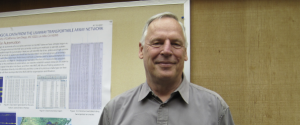Wildfire
Selection of Scripps Oceanography & UC San Diego research & resources
Remote monitoring of Southern California for improved early-warning
ALERTWildfire is a consortium of three universities — The University of Nevada, Reno (UNR), University of California San Diego (UCSD), and the University of Oregon (UO) — providing access to state-of-the-art Pan-Tilt-Zoom (PTZ) fire cameras and associated tools to help firefighters and first responders: (1) discover/locate/confirm fire ignition, (2) quickly scale fire resources up or down appropriately, (3) monitor fire behavior through containment, (4) during firestorms, help evacuations through enhanced situational awareness, and (5) ensure contained fires are monitored appropriately through their demise.
During the past three fire seasons (2016-2018), ALERTWildfire provided critical information for over 600 fires, including the Woolsey, Lilac, Wall, Whittier, Thomas, Tule, Woodchuck, Earthstone, Truckee, Draw, Snowstorm, Hot Pot, and Emerald fires; a 2016 arson spree in Lake Tahoe; and hundreds more. A strategy was adopted in early 2018 to install cameras on existing third-party microwave networks, to build larger virtual networks, produce regional coverage, and do it quickly. In this model, “towers of opportunity” (e.g., utilities, state and county services, and other private point-to-point communications infrastructure) are outfitted with fire cameras and associated equipment to potentially allow one hundred or more fire cameras to be installed in a single season. The data from these confederated networks are seamlessly incorporated into NSL’s back-end acquisition systems and presented on our cloud-based website in a straightforward manner. To firefighters and first responders, it means “more cameras more quickly”, which equals better decision making capabilities. Now dozens and dozens of cameras can be installed in a single month as the goal of 200-300 new fire cameras by Oct. 1st, 2019 in California becomes a reality; efforts to scale up in other states are underway.
PIs: Frank Vernon, Neal Driscoll
Wildfire risk in a changing climate
Drier warmer conditions exacerbate and prolong seasonal wildfire risks. Scripps scientists at CNAP have worked closely with fire agencies throughout the West to better understand fire behavior, institutional knowledge of firefighters, and future projections of wildfire. CNAP scientists study how climate change, land-use, and fuel management affect wildfires. CNAP supplies maps and databases of wildfire scenarios for impact assessments and forest management and has been pivotal in providing a decision support tool for federal land managers to understand and mitigate fire risks.
PI: Daniel Cayan, David Pierce
Work with Scripps
- Access leading scientist expertise for decision-making and planning
- Design collaborative research that tackles risk for wildfire
- Get a seat at the table for the latest scientific updates
- Learn how to implement newest regional climate models
- Work with talented Scripps students and potential hires

Dr. Daniel Cayan, Researcher, Scripps Institution of Oceanography
Director, California Nevada Applications Program
Director, California Climate Change Center

Scripps Institution of Oceanography

